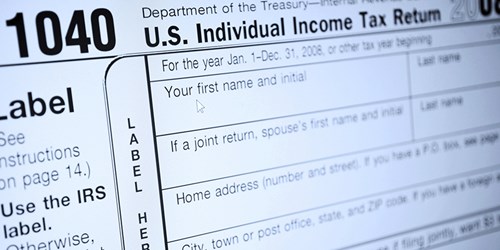
Almost 75% of all tax filers end up with returns according to statistics released by the IRS (Internal Revenue Service - Statistics of Income Bulletin - Spring 2014 - Washington, D.C.: 73.9% in 2013 and 73.25 in 2014). These statistics are for taxes filed and do not specify the tax year for those filings.
This means that the majority of America’s workers are overpaying their taxes during the year. Most people pay their Income Taxes via wage withholding (the money your employer deducts from your paycheck); while the remainder pay via Estimated Tax filings, due quarterly, higher income earners). Simply put, a refund means that taxpayers are paying more tax than they have to during the year and recover these overpayments when they file their tax returns the following year.
Withholdings
How is withholding determined? Well, remember when you got your job, you had to fill out a stack of paperwork? One of those forms was a W-4. It is a worksheet that tells your boss how much should be withheld from your paycheck. By completing the form as accurately as you can, your withholdings should equal 90% or more of the tax that will be due when you file. Since most of us filing taxes are overpaying, it means that most people are conservative when completing this form. Further, I’d be willing to bet that most people do not review their W- 4 forms again, unless they manage to under withhold and wind up having to pay the IRS the following year.
Getting a refund can be emotionally satisfying and a relief. For many people it’s a nice way to get a little extra boost after we file our taxes and for others, it’s a way of feeling good that you don’t owe the government any money. Without commenting on the fact that we are providing the government with free loans every year, the fact is most of us are very comfortable with this arrangement. There are stiff penalties for underpaying your taxes during the year, either via withholding or estimated payments. Failing to pre-pay at least 90% of your taxes will find you paying penalties.
Furthermore, the tax withholding rates, as determined by the annual IRS Publication 15 (Circular E - The Employer’s Tax Guide) are deliberately conservative to help insure taxpayers pay their taxes during the year. These withholding tables are updated every year to incorporate any changes in the tax laws or tax rules authorized by Congress during the past year (2013 for 2014, 2014 for 2015, etc.). But as noted previously, most taxpayers do not review their W – 4 Forms annually to see if they are withholding accurately. You are permitted to change your withholding whenever you need to unless the IRS issues backup withholding instructions to your employer, usually for severe or repeated underpayments.
Bottom line, you are responsible for your own withholding and you manage it (or don’t) as you see fit.
Tax Filings
The other part of the refund equations is calculating how much you actually owe in taxes. On the W-4, you estimated what you have to pay by summarizing the tax-paying facts of your life: the number of dependents, estimating your deductions and other aspects of your tax profile. Annually, usually by April 15, you have to file your Individual Tax Returns (as opposed to Corporate or other non-person tax entity, such as charities, schools, etc.).
This is where you calculate what your actual tax life is. So the summary of things like certain casualty losses, how much you put away for your retirement, how much you spent of deductible healthcare expenses, mortgage interest, tax credits and any and adjustments that effect the tax due is captured on your tax return. Then you or your tax preparer does the straightforward math of adding up everything you paid in taxes via withholdings, quarterly filings – as appropriate and even prepayments from last year’s tax refunds, in any and subtracting what you actually owe to determine if you get a refund.
The Process
Many people labor under the opinion that because you get a refund that the IRS has accepted your version of your annual tax bill as submitted on your returns. Not true! Tax returns are reviewed for mathematical errors not accuracy or more specifically compliance. Errors, such as math, mailing to wrong tax center, inaccuracies on the return (lacks date, or signature, bad social security number, among others) will delay, not eliminate your refund. As soon as the preliminary review is completed, usually by software designed to find and identify these common errors, the IRS will issue the refund. However, the IRS has three years, in most circumstances, to examine your taxes (check for compliance) and bill you for any discrepancies. This is not the same as an audit. An audit takes place when the IRS either determines that there is some serious error(s) in your return. Alternately, you were randomly selected for audit, which is done as a quality control procedure to insure compliance with the tax laws.